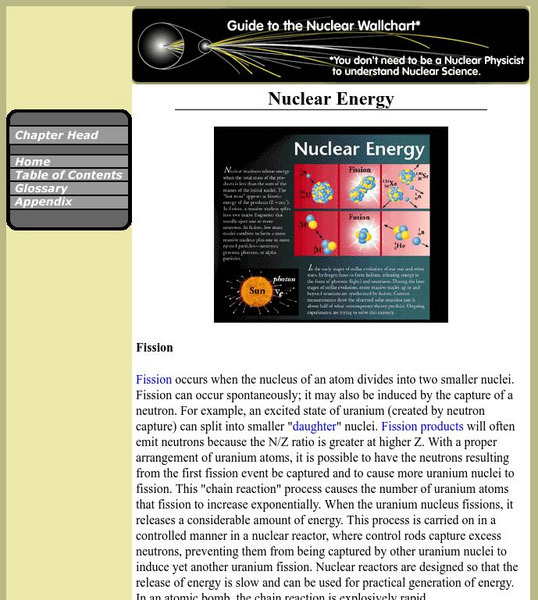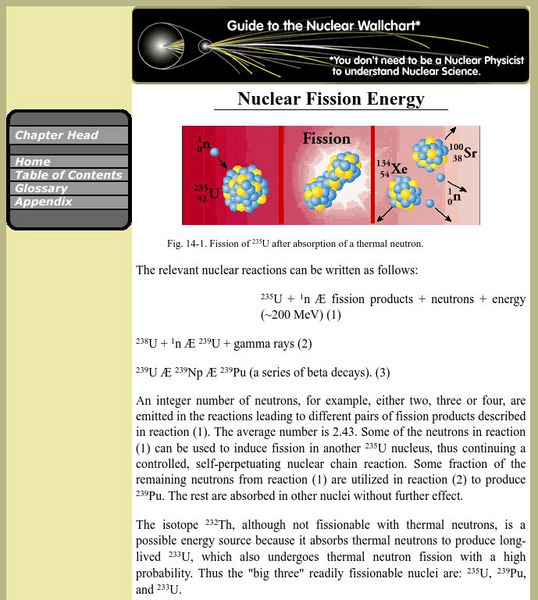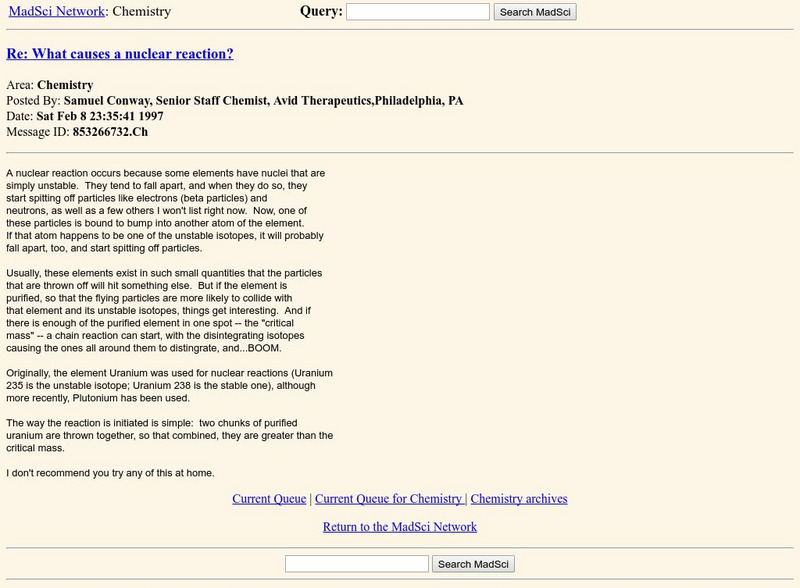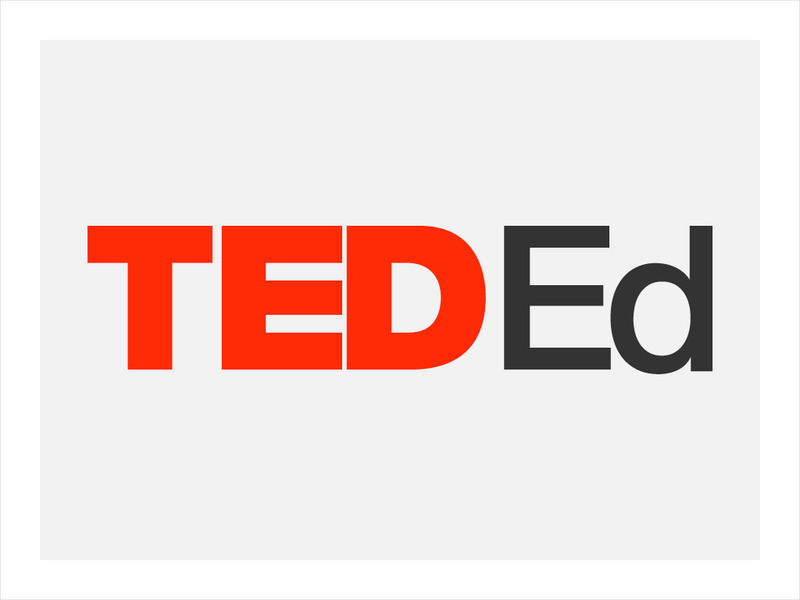Mocomi & Anibrain Digital Technologies
Mocomi: Nuclear Fission and Nuclear Fusion
Nuclear fission and nuclear fusion are reactions that convert matter into energy. Learn the difference.
Georgia Department of Education
Ga Virtual Learning: Nuclear Physics
Through informational text, interactive activities, and virtual animations students learn about the atomic nucleus, fission, fusion, and radioactive decay.
Lawrence Berkeley National Laboratory
Berkeley Lab: Nuclear Energy: Fission/fusion
Provides a definition and explanation of fission, the splitting of a heavy nucleus into two roughly equal parts, and fusion, the process where two nuclei combine together to form a larger nucleus.
Chiral Publishing
Chiral Publishing: An Introduction to Chemistry: Nuclear Energy: Audio Book
Listen and learn as you view examples and explanations of nuclear energy. View examples and formulas for binding energy, nuclear fission, chain reaction, and nuclear power.
Other
Nuclear Threat Initiative: Nuclear 101: Nuclear Weapons
Interactive tutorial helps with understanding nuclear weapons, the different types, how they are different from conventional weapons, and how many countries have developed them.
Chiral Publishing
Chiral Publishing: An Introduction to Chemistry: Nuclear Chemistry: Audio Book
Learn about nuclear energy as you listen to the audio book describing nuclear chemistry. View maps, examples, graphs, and pictures describing everything from electrons to beta emissions and more.
Sophia Learning
Sophia: Fission and Fusion: Lesson 2
This lesson will explain how fission and fusion in chemical reactions can be used to produce energy. It is 2 of 4 in the series titled "Fission and Fusion."
Sophia Learning
Sophia: Fission and Fusion: Lesson 4
This lesson will explain how fission and fusion in chemical reactions can be used to produce energy. It is 4 of 4 in the series titled "Fission and Fusion."
Sophia Learning
Sophia: Fission and Fusion: Lesson 1
This lesson will explain how fission and fusion in chemical reactions can be used to produce energy. It is 1 of 4 in the series titled "Fission and Fusion."
Sophia Learning
Sophia: Fission and Fusion: Lesson 3
This lesson will explain how fission and fusion in chemical reactions can be used to produce energy. It is 3 of 4 in the series titled "Fission and Fusion."
Energy for Sustainable Development
Esd Bulgaria: Kids & Energy: Uranium (Nuclear)
Nuclear energy is energy in the nucleus of an atom. Atoms are tiny particles that make up every object in the universe. There is enormous energy in the bonds that hold atoms together. Nuclear energy can be used to make electricity. But...
Lawrence Berkeley National Laboratory
Berkeley Lab: Nuclear Fission Energy
Resource explains and illustrates nuclear fission energy.
MadSci Network
Msn: What Happens in a Nuclear Reaction?
From The Mad Scientist Network web site. Using a question and answer format, this page discusses three types of nuclear reactions - spontaneous decay reactions, nuclear fision reactions, and nuclear fusion reactions. Each reaction type...
Stanford University
Stanford Report: Edward Teller, Father of Hydrogen Bomb
Students don't generally learn much about Edward Teller in school. But with the progress in science in the 20th century, maybe they should. Edward Teller was one of the main architects of the hydrogen bomb. This is a great site by...
Nobel Media AB
The Nobel Prize: Energy From Matter
The history of energy being transformed from matter is provided at this site. The information starts at Einstein's formula, then discussions fusion, future energy sources, fission, and nuclear reactors.
Georgia Department of Education
Ga Virtual Learning: Physical Science: Nuclear Chemistry
A complete learning module with interactive activities as well as informational text to help students distinguish the characteristics and components of radioactivity.
NASA
Nasa: Exploring Climate Change
Test your knowledge of energy and its role in Earth's climate system with these interactive quizzes.
Other
Need: Exploring Nuclear Energy [Pdf]
This downloadable article addresses all aspects of nuclear energy. Visual charts make understanding of cycles and concepts easier. Most useful for older students and educators. PDF (requires Adobe Reader).
TED Talks
Ted: Ted Ed: If Superpowers Were Real: Body Mass
What if manipulating body mass wasn't just the stuff of fantasies and comics? Is it scientifically possible to manipulate your body mass? In this series, creator and educator Joy Lin tackles superpowers and reveals just how...
National Academies of Sciences, Engineering, and Medicine
The National Academies: Our Energy Sources: Nuclear Energy
Nuclear fission energy accounts for a large portion of energy production worldwide. New plants will use improved technologies. There is also research underway to explore how to harness the energy produced from nuclear fusion, but this...
Georgia State University
Georgia State University: Hyper Physics: Relativistic Energy
A mathematically understandable presentation of relativistic energy. Parts include Relativistic Energy, Rest Mass Energy, Conservation of Energy, Pair Production, Relativistic Kinetic Energy, and even Kinetic Energy. A couple of...
Lawrence Berkeley National Laboratory
Berkeley Lab: Basic Nuclear Science Information
Site provides the ABC's of nuclear science including radioactivity and gamma decay to fission and comic rays.
Other
Review Game Zone: Earth/environmental Science Ncfe Review Part 1
Take this 10 multiple choice question quiz on earth and environmental science.
















